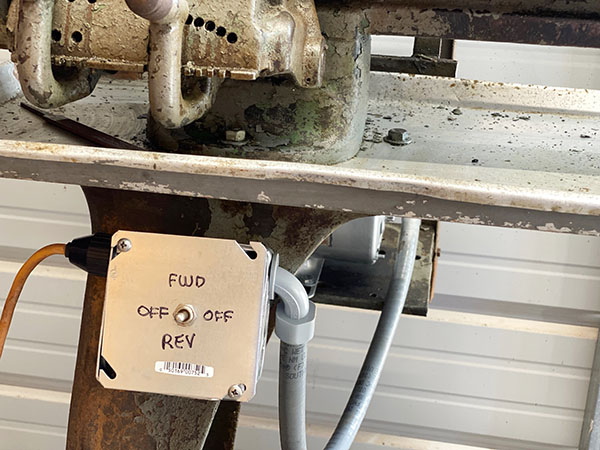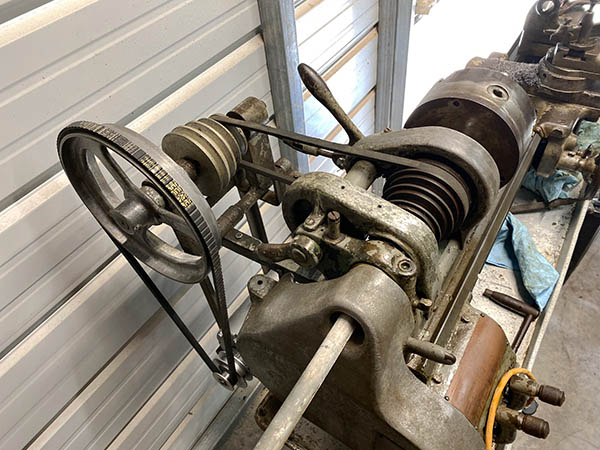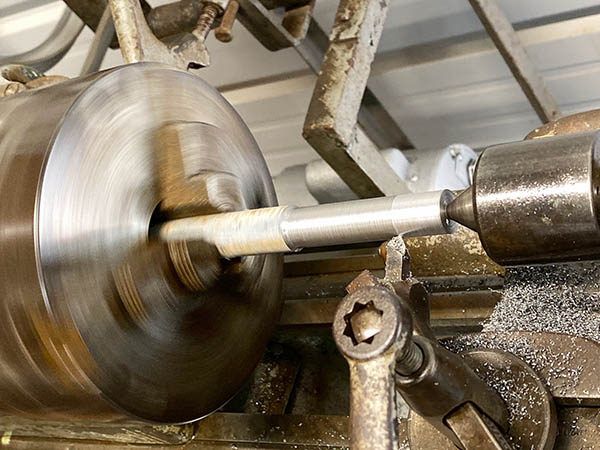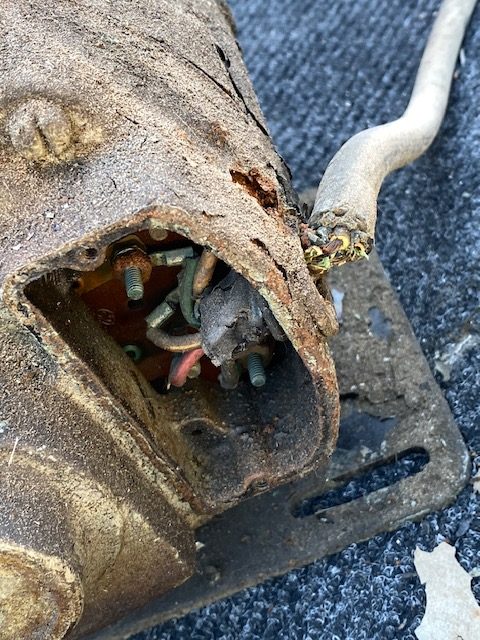
The South Bend lathe project has been waylaid by several factors, none of them your fault. I did manage to wire the 4-pole, two-position, center-off toggle switch into the Harbor Freight ½ horsepower motor. So now I have forward and reverse. I’ll probably never use reverse but it’s good to have it in case you want to cut from the backside.

I could have made the motor reverse with a three-pole switch but since the motor is wired high voltage (240vac) you want all hot legs disconnected when the switch is in the off position. And I had the switch. The switch connections started out simple enough but soon I had wire coming out my ears. I ended up having to double up the metal junction box to allow enough space for the spaghetti.

I normally don’t like complicated things but I couldn’t come up with a better way and it was like 115 degrees in the shed. Not a good temperature for thinking. I’ve included a shot of the Harbor Freight motor’s faceplate in case anyone can come up with a simpler way of reversing the motor.

After the motor was running I had to file the 3/4-inch to 5/8-inch shaft-sleeve as it was too tight from the factory. I also cut down the tall key that was included in the sleeve package. The new belt is narrower than the original, or maybe not. The old one was pretty rotten. As it is situated, the inner face of the belt contacts the center of the motor pulley. The V-sides are supposed to do the contacting around here. I forget if A is wider than B in belt-speak but I’ll have to do a little work on the belt and pulleys. The thing works like it is so that’s good enough for now.

I’ve been relearning the various levers and knobs on the South Bend, levers and knobs that I knew blindfolded 40 years ago. My first cuts were ragged, a combination of no end support on the work piece and a cutting tool that has been in the lathe for eternity. I’ve since quelled the shaking by using a live center. That one change improved the appearance of the machined surface by 42%. The tool is still not what I want as it is tearing material more than cutting. I might try some of these newfangled carbide tools, the ones with a three-sided cutting edge that you can swap as it gets dull.
I’ve machined my test piece to roughly 5/8” so my next trick will be to dig around the junk box and see if I can find a thread cutting tool. You need a V with the correct angle. Watch this space for the threaded rod or mangled mess. I’ll also go over the remaining tooling I have for the South Bend. I’ve lost a lot of stuff over the years but there are still toys like steady rests, faceplates, and lathe dogs to clean up and experiment with.

You can read the first part of South Bend story here.










